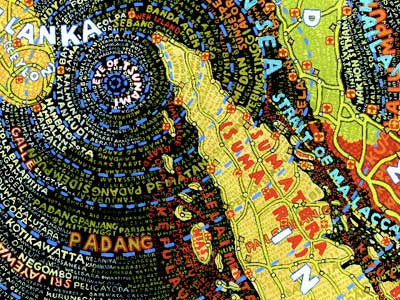Design for Social Impact
Design is often considered a powerful tool capable of changing the world for better. If the goal of a design process is to improve human well-being and livelihood, we are dealing with so-called 'social design'. There are many definitions of the term but within the design world social design is understood as the designers' responsibility to facilitate the betterment of the society and/or the environment through good design.
The idea of responsible design was popularized by Victor Papanek (1927-1999) known as "a philosopher of design" and one of the first advocates of socially and ecologically sensitive design of products, tools and community infrastructures. Papanek travelled around the world giving lectures about his ideas for ecologically sound design serving the poor, the disabled, the elderly and other minority segments of society. His philosophy became the foundation for other ethical movements in design such as human-centered design, universal/inclusive design and sustainable design.
Currently, there are a few organizations putting social design high on their agendas. These include:
- AIGA - professional association for design with a special interest in society and environment. AIGA's Center for Sustainable Design provides a wide range of information regarding sustainable business practice.
- The Designers Accord - Global coalition of designers, educators and business leaders working together to create positive environmental and social impact.
- SocialDesignSite - International platform on social design projects.
- Design Council UK - National strategic body for design.
- O2 Global Network - International network on sustainable design.
- Massive Change - explores the legacy and potential, the promise and power of design in improving the welfare of humanity. It originated as a collaboration between Bruce Mau Design and the Institute without Boundaries.
- WorldChanging - Online magazine that works from a simple premise: that the tools, models and ideas for building a better future lie all around us.
- DESIGN 21: Social Design Network - Online community that brings together socially conscious designers, non-profits, individuals and organizations to promote design for the greater good. It is co-founded by The United Nations Educational, Scientific and Cultural Organization.
- Social Designer - Online competition platform and marketplace for socially conscious goods.
- IDEO - Global Design consultancy that creates impact through design.
Since 1984 he worked to establish a code of ethics which embraces social responsibility for graphic designers throughout Canada. In 2000, Berman sold his design agency and rededicated his career to help spread the idea that visual communications can, and will, help repair the world. He authored Do Good Design (2009) in which he encourages designers not just to do 'good design' but to do 'good'.
He writes: "Designers have far more power than they realize: their creativity fuels the most efficient (and most destructive) tools of deception in human history. (...) The same design that fuels overconsumption also holds the power to help repair the world."
In his book, Berman encourage designers to take the "Do Good Pledge", which involves the commitment to stay true to the profession and oneself, and spending at least 10% of the professional time helping repair the world.
At first I was attracted to the idea and wanted to take the pledge myself. But after researching Berman's work deeper I got an impression, and it's my subjective opinion, that Berman persuade designers to scrap aesthetics altogether and devote their lives entirely to helping others. If you look at his website, you will notice that it's not fantastically designed. I found it surprising taking into consideration that Berman spent years in website design. Even his book, written by a graphic designer for other graphic designers, seems to be lacking the visual 'wow factor'. His graphics somehow fail to truly impress me.
In my opinion, designers can do more good if they combine their 'good intensions' with 'good designs'. I agree with Berman's claim that designers should be doing more 'good' for the world. But personally, I believe that they should also make sure that their 'good' looks good. Design in about inspiring people to act and visually persuading them to do so. And although I admire Berman's work ethics and philosophy, his graphics somehow failed to convince me.
Worldstudio
 Worldstudio is a marketing and design firm which believes that corporations hold the power to make lasting social and environmental change. It works with organizations to connect their marketing goals with strategies for corporate social responsibility through marketing, communication and branding programs.
Worldstudio is a marketing and design firm which believes that corporations hold the power to make lasting social and environmental change. It works with organizations to connect their marketing goals with strategies for corporate social responsibility through marketing, communication and branding programs.In 1993 Worldstudio established Worldstudio Foundation as a vehicle for the company to give back to the creative community. One of the most important initiatives of the foundation is the Design Ignites Change project co-founded with Adobe Youth Voices. Design Ignites Change engages hight school and collage students in multidisciplinary design and architecture projects that address pressing social issues. In its annual contest, it rewards exeptional application of design thinking to solving problems in health, education, environment, communities, politics, business and humanity.
In 2006, Worldstudio got involved in The Urban Forest Project described as a series of unprecedented outdoor banner exhibitions taking root in cities around the world. In each location, artists, designers, students and the general public employ the idea a tree to make a powerful visual statement on banners that will be displayed throughout the community.
The tree is a metaphor for sustainability and, in that spirit, the banners at the close of each exhibition will be recycled into totebags and auctioned off to raise money for a local non-profit organization. Each local project will also incorporate or support an environmental call to action such as tree planting initiatives. The program can easily be adapted to address a number of green and creative initiatives in a variety of ways to shape a project that is unique and expressive of the local community.
I chose to discuss The Urban Forest Project because it perfectly illustrates the idea of design for social change. It addresses the environmental issues through the colaboration of many people. In my opinion the designers efforts to change the world must not be limited to digtal desktop design. The Urban Forest Project takes design for sustainability to the streets, gets the public not only influenced but also involved. As opposed to a one-off campaign, the project created a wider and more flexible system of eco-friendly design.












There are hundreds of banner designs I wanted to show here but I have to limit myself to a few. For more visit the following websites.
Times Square, New York
Baltimore
Denver
Albuquerque
Toledo












I seldom leave a response, however after browsing a bunch of
remarks here "TASK 5: Redesigning the World".
I do have 2 questions for you if it's okay. Could it be simply me or do some of these remarks look like they are coming from brain dead people? :-P And, if you are posting on other social sites, I'd
like to keep up with anything fresh you have to post.
Could you make a list of every one of all your social community sites like your Facebook page,
twitter feed, or linkedin profile?
Visit my webpage - losing weight Miami